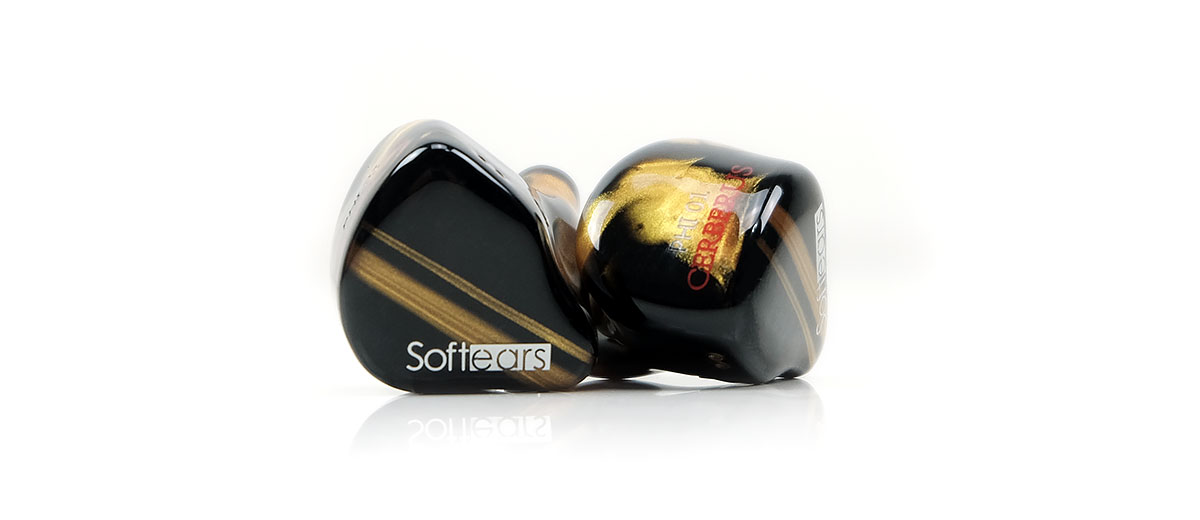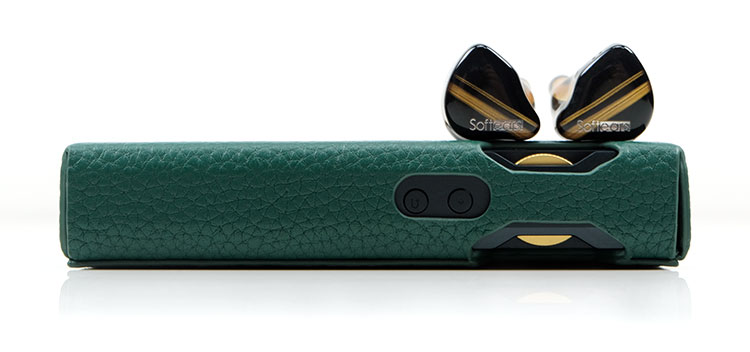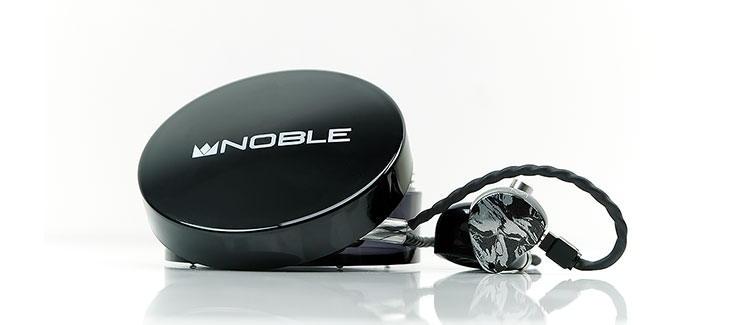Synergy
Efficiency
The Cerberus is rated at just 5Ω but less sensitive at 104dB SPL. It does drive a little easier than the RS10 but in the main, not a super-sensitive monitor with competing IEMs such as the MEST MKII and the Noble Audio Khan more efficient at slightly lower volumes in our testing.
That is not to say you need a powerful amp to drive it. Low gain, single-ended using the stock cable will work just fine with its low impedance rating. Rather, the volume is a fair few dB higher than the norm. On the plus side, hiss is not an issue with the Cerberus, it will play out just fine on DAPs with higher noise floors such as the 4.4mm output of the HiBy R8.
Pairings
Five DAPs were tested with the Cerberus with 2 delta-sigma and 3 R2R. This includes the FiiO M17, the Lotoo PAW Gold Touch, the HiBy RS6, Cayin’s R01/N6ii combo, and the Luxury & Precision P6 Pro.
The most dynamic and impressive in terms of tonal balance was the P6 Pro. It brought the Cerberus to life with excellent physicality on the low-end, firm mids timbre and nothing lean on the highs. It did an excellent job of fleshing out vocals with no sibilance yet still managed to keep the Cerberus more to the accurate side than too soft or warm.
The M17 improved on staging dimensions, offered a cleaner airier sound and stronger bass response from the Cerberus compared to the P6 Pro. However, the note texture was a little more polished and the weight in the mids and treble a little lighter.
The LPGT was more rounded in tone but more neutral on the low-end compared to the M17 with the Cerberus. It did better for harmonic balance through the mids and the highs but felt a bit flat on the bass. This is an area I prefer to hear more from the Cerberus.
Of the other two R2R DAPs, the RS6 did really well with the Cerberus vocals, sounding very inviting with a rich and euphonic delivery. However, the bass lacked a little definition and there was not a huge amount of airiness in the highs.
The Cayin R01 offers more treble energy and teases out a better sub-bass response from the Cerberus but it’s a little thinner than the RS6 on the mids. Still, a very nice tone for me, and of the two I would probably pick the R01 over the RS6 for the Cerberus due to the better staging depth and airier sound.
Select Comparisons
Softears RS10
$2099.99
Technical
The RS10 was reviewed by us just last month and alongside the Cerberus, it is the co-flagship monitor in the Softears lineup. However, it’s a vastly different configuration with a 10 driver all-BA design using a unique 5-way crossover chock full of filters and good impedance control.
So timbrally, the RS10 should be consistent if BA is our thing whereas the Cerberus is a dynamic driver, quad BA, and a dual electrostatic combo which is quite a mix of differing driver timbres. Softears does not mention the crossover for the Cerberus but I presume a 3-way given it has a triple-bore tubing system.
The one technical commonality is the use of that passive driver system though it is applied differently in each IEM. The RS10 passive driver implementation is focused on the low-frequency drivers to enhance the lows whereas the Cerberus passive is on the midrange quad BA pack to enhance the midrange physicality and richness.
In terms of sensitivity, the Cerberus is surprisingly more efficient despite using a dual e-stat driver and dynamic driver combo at just 5Ω and 105dB compared to the RS10’s 25Ω and 100dB SPL rating. Neither are what I would call super sensitive in our real-world tests using an LP P6 Pro DAP’s SE output in low gain but the RS10 does need more juice.
Design
The aesthetic is quite different but save for a slightly fatter nozzle, the RS10 form factor is virtually the same as the Cerberus. That means both have a nice level of contouring to them, a fairly deep level of ear canal penetration, and a very comfortable fit being relatively lightweight.
The RS10 does isolate better though primarily due to its all-BA design not requiring any sort of bass venting port which the Cerberus has. That being said, the Cerberus isolation is above average for me for a vented solution so not a major issue.
Aesthetics is in the eye of the beholder. I think the transparent design of the RS10 will have appeal to those who like to pee and stare at the tech inside but for those that do not the darker warmer finish of the Cerberus is more vivid and unique.
Both resin shells are finished to a very high level with no bubbles or rough surfaces and a fairly seamless finish to the main shell and faceplate joins. The two monitors also share the exact same 4-core 0.78mm 2-pin terminated 6N silver-plated single-crystal copper cable which works aesthetically on the RS10 but looks a bit ‘off’ beside the darker finish of the Cerberus.
Performance
Chalk and cheese here with the Cerberus aiming for a warm and smooth coloration and the RS10 opting for a decidedly more neutral and cleaner reference-type tuning.
Both have raised bass signatures but the emphasis is very different here. The RS10 has a punchy impressive bass tuning for a BA design with a shape and speed that is excellent and never feels lightweight in terms of physicality.
The Cerberus is more sub-bass orientated with a deeper cut into the mid-bass so it’s less punch and more of rumble with a natural dynamic driver texture but still, quite a controlled rumble and not like an Odin or Legend EVO level. I could best describe it as a balanced bass delivery with a solid fundamental but not gut-wrenching.
Treble is much more relaxed on the Cerberus which only adds to that warmish hue over the mids timbre. It is not a brick wall roll-off, there is enough of a natural fade for high-frequency spatial notes to be heard. Rather, compared to the RS10 it falls back a bit in terms of presence and pulling down the staging heigh and airiness in the process.
Mids are relaxed and relatively linear in their tuning on the Cerberus compared to the livelier and brighter sounding RS10 performance. They are not recessed, just mildly forward around 1-2k whereas the RS10 is more so around 2-4k with a stronger treble bump that gives the upper mids timbre more bite and perceived clarity.
If you need clarity, pinpoint imaging and a good treble presence pick the RS10. If you prefer a smoother warmer hue, stronger sub-bass, and euphonic vocals I would go with the Cerberus.
Unique Melody MEST MKII
$1799
Technical
This is the custom version that retails at $1799 with the universal at $1499 which is a heck of a deal if you ask me for what the MEST MKII packs inside.
Like the Cerberus, the MEST MKII is a hybrid design with dynamic, BA, and electrostatic drivers but instead of an additional vibrating passive driver the MEST MKII uses a bond duction driver.
The MEST MKII configuration is a single 10mm dynamic driver for the lows, a dual BA driver unit for the mids and upper mids, dual BA for the highs, and dual Sonion electrostatic drivers for the ultra-highs. The bone conduction driver range is more of an additional layer from around the upper bass to the upper treble.
Both the passive BA and the bone conduction intends are in the same ballpark with the aim to give a bit more of a physical approach to the drivers though the Cerberus is more targeted to the BA drivers in the mids.
Neither monitor is hugely efficient but we do know the MEST MKII uses gen 2 Sonion e-stat drivers as opposed to the gen 1 version inside the Cerberus. The MEST MKII ratings are a little more sensitive at 12.3Ω and 112dB SPL compared to 5Ω and 104dB SPL of the Cerberus.
That difference is also reflected in our real-world tests also using SE low gain from the LP P6 Pro and the HiBy RS6 with both DAPs requiring a bit more volume for the Cerberus. Neither will have issues with any background hiss from higher gain amp outputs such as the HiBy R8 4.4m imbalanced output.
Design
One is custom and the other is universal so it is not a like-for-like design comparison. Generally, I prefer a custom design but the process of getting one, including the additional costs and low resale value, can put others off. Despite it reading $1799, that is a starting point so final costs could be over $2k including audiologist earmolds, shipping, and design choices.
If you do get a good fitting one then the level of isolation will be vastly superior and that is the case here. Comfort will depend on what you are looking for in a monitor.
The MEST MKII custom fits perfectly but it is bigger and a little heavier in the ear. Whereas the universal Cerberus is much lighter and you can switch tips to tweak the sound or fine-tune the fit if required.
The MEST MKII stock UM Copper M2 cable is a big upgrade on the Cerberus cable with the individual retail price at a whopping $562.
This is a much bigger 24AWG gauge OCC copper 4-wire geometry wrapped in a carbon fiber sleeve and applied with a black PVC coating on the external surface. It looks the business so sorry Softears but as easy to handle and non-microphonic as that stock cable is, it just looks a little too cheap for me.
Performance
I think these two monitors are aiming for very similar territory but with just a few slight changes here and there. Both are aiming for a smooth, full-bodied tone with a good fundamental but not a huge treble emphasis.
Where they differ the most is in the midrange which is very linear for me on the Cerberus from the lower-mids right up to around 3k and just before the upper-mids creating a very even imaging experience also.
The MEST MKII has a bit more lower-mids emphasis but otherwise dipping from 1-4k with slightly less authority and forwardness in the vocals. In contrast, the Cerberus has the better weight in its vocal performance with a richer and smoother timbre.
The MEST MKII does better for treble presence, however, with improved mid-treble extension that gives the harmonic balance a bit more brightness. This, in turn, fleshes out more percussion energy compared to Cerberus’s softer signature.
Both extend very nicely on the low-end with a sub-bass bias from those hefty dynamic drivers. However, the Cerberus dynamic driver feels the more voluptuous and languid of the two presentations.
What I mean by that it sounds like it has more quantity but a longer decay and slightly softer sounding compared to the MEST MKII low-end. You can tighten that up, however, by changing the stock tips to Final E which improves the Cerberus bass definition closer to the MEST MKII performance.
Noble Audio Khan
$2399
Technical
The Khan has been out for a few years now but in 2019 it was one of the first few to dabble in tri-brid designs much like the Cerberus.
Internally, the Khan is a 6-driver setup as opposed to the 7 inside the Cerberus but both do come with a single 10mm dynamic driver for the lows. The Khan also has 4 BA with 2 for the mids and 2 BA for the mid-highs.
The key difference is the final driver with the Khan using a single 10mm piezoelectric super-tweeter for the ultra-highs compared to a dual Sonion e-stat for the Cerberus. There are no additional passive-type drivers similar to the Cerberus or bone conduction inside the Khan.
The official rating for the Khan is not released by Noble which is consistent with most of their releases. Compared to the 5Ω and 104dB rating of the Cerberus, the Khan is fairly close in terms of required power and volume setting, perhaps a little more sensitive but the gap is not huge. I suspect the tuning plays a role here in perceived volume as the Khan delivers a feistier sound.
Design
The Khan is a slightly more compact universal form factor compared to the Cerberus. The Softears dimensions are definitely the deeper of the two in terms of the main shell and the nozzle length by 1-2mm though the insertion depth is about the same. I suspect due to the flatter shell of the Khan it can get a bit closer to the concha basin and lets the nozzle do most of the digging.
In terms of aesthetics, it is 50:50 for me with both IEMs offering an attractive finish in different styles. The Khan uses a black and white modern M3 composite twist on the traditional Mokume Gane metallurgy process for the faceplate with a black SLA shell. The net effect is a collage or a swirl of black and whites with an all-black rear end.
The Cerberus also starts with a black finish as its shell base but it is finished with a much warmer and brighter looking fusion of orange combined with a near-seamless finish making it look like one complete body rather than multiple parts. One thing to note, the Khan has a stainless-steel spout with a lip that looks more durable for both tip use and wear and tear.
Cable wire quality is much the same with both using a 4-wire SPC inside. The Khan stock cable finish is more eye-catching with two-tone black and white PVC jacket compared to the silvery finish of the Cerberus version. Both handle fairly well but aesthetically the Khan cable looks the more luxurious of the two.
Performance
The difference between these two is dominated in part by the bass quantity and the piezoelectric timbre over the Sonion e-stat timbre for the highs.
The overall tone is one of warmth and smoothness from the Cerberus and a more strident spikey coloration from the Khan. The low-end dynamic driver from the Cerberus is warmer, more enveloping, and slightly slower compared to the lighter but punchier Khan tuning.
I suspect there is more of a dip in the Khans upper bass to lower-mids tuning as the separation from bass to mids is more noticeable compared to the Cerberus straight line from 300Hz to almost 1k. That carries through to the lower-mids instrumental timbre also with a richer smoother tone from the Cerberus and the higher contrast and drier vibe from the Khan.
These two are also vastly different for the top-end with the Cerberus fading beyond 5k and darker sounding whereas the Khan has a big bump from 7-10k.
You can hear that stronger treble influencing almost everything in the Khan’s midrange harmonic balance, hence the spikey reference. It is not a thin sound but it’s definitely harder-edged and drier sounding with some dissonance on percussion passages.
The Cerberus’s more rounded and softer tone through the mids and highs could probably do with a few dB lift post 5k but otherwise, the more forgiving of the two monitors for longer listening sessions.
Our Verdict
The Softears Cerberus is the yin to the yang of the RS10 with a perfectly complementary relationship to each other when placed side by side. This is a smooth, deep, and easy-going high-end performance with a beautiful vocal rendition as the icing on the cake.
The only drawbacks are the lack of high-energy impact from the generally softish attack and the laid-back treble from those gen 1 electrostatic drivers. It might have you reaching for a bit of PMEQ or a high-energy source to get the match just right.
Reference audiophiles with an eye for detail will pick the RS10, and technically it is the better performer to my ears but with some mixes, it can be less forgiving. Not so the Cerberus which can deliver almost anything without much fuss.
Softears Cerberus Specifications
- Sensitivity: 104db/100mV @1kHz
- Impedance: 5Ω @1kHz (±15%)
- Frequency Range: 10Hz – 80kHz (1/4’ Free Field, -3dB)
- Effective Frequency Response: 20Hz – 20kHz (IEC-60318-4)
- THD+IMD @94dB: <1% @1kHz
- Cable Connection: 2-Pin 0.78mm









